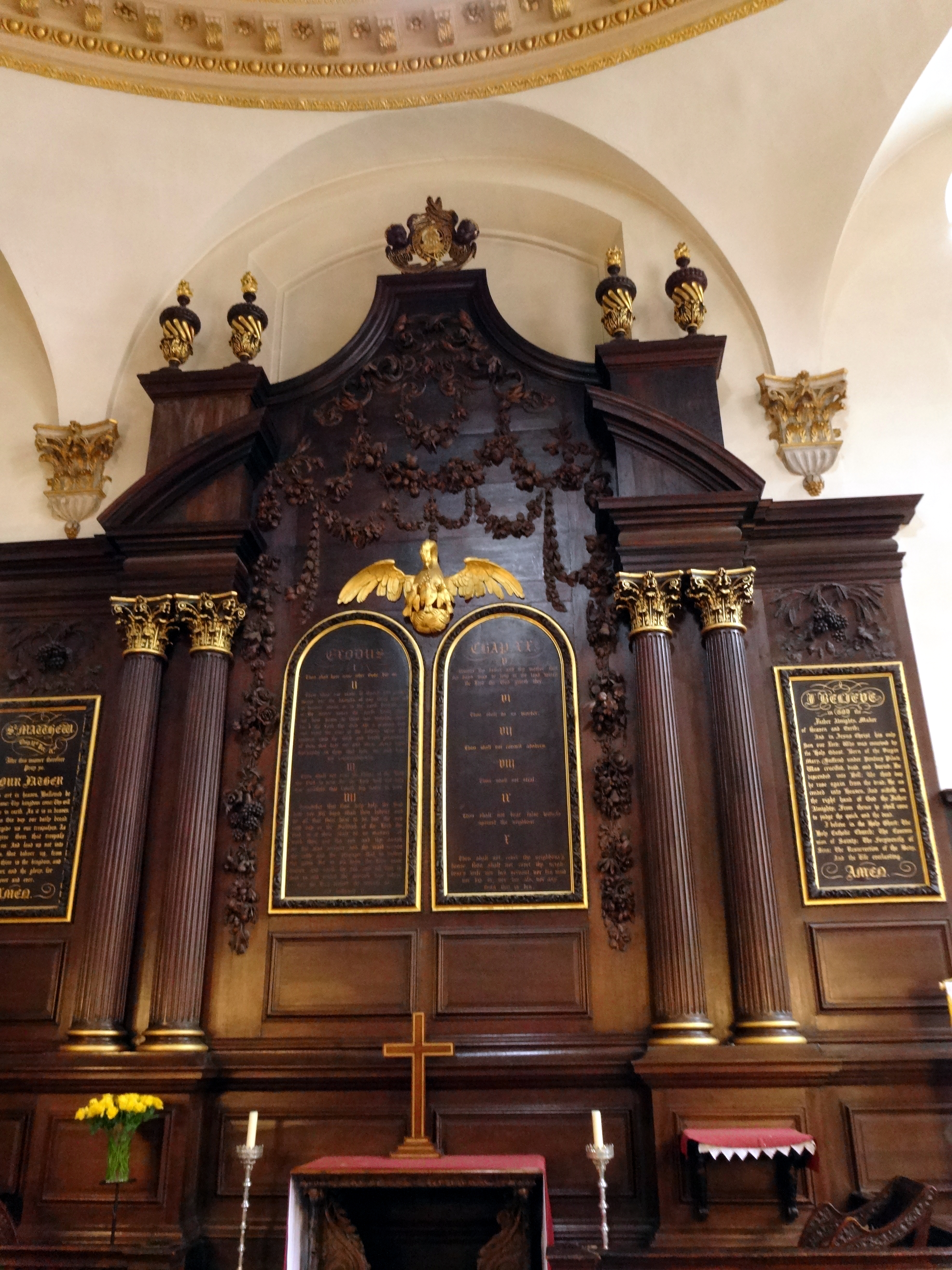
Glorious carvings!
Garlands of flowers, fruit, vegetables, and foliage hang from garlands, that hang from garlands, that hang from great whorls of acanthus. The reredos is extremely tall, offering an immense vertical space that Gibbons filled well. The prominent pelican, this time gilded, appears in many churches of this era. At a time when lifelike images of Christ and the saints were banned, the pelican was an accepted symbol of Christianity . Here, it becomes a striking center of attention.
Not only the garlands and whorls, but also the pelican, columns, capitals, urns, flame finials, cherubs, the king’s coat of arms, and side panels are from Gibbons’ shop. By this time, he was known to have “a large shop,” but we don’t know how many carvers he employed or how the work, or income, was divided among them.
These carvings date to 1681-1686 when the church was being rebuilt after the Great Fire. Even though the 1680s church rebuilding was a project of Sir Christopher Wren, documentation shows that Gibbons negotiated his work not with Wren, but directly with the churchwarden. Geoffrey Beard tells of a May 1686 letter from Gibbons requesting partial payment of £30, and a later receipt for £10. Beard believes the project cost over £100.
What was £100 worth then? One history source talks about the cost of living in the 18th century. Gibbons worked in the late 17th century, but inflation was so low that we can use the 18th century numbers:
“… a figure close to £40 was needed to keep a family. The middling sort required much more still and could not expect to live comfortably for under £100 per year, while the boundary between the ‘middling sort’ and the simply rich was in the region of £500.”
… stained by Victorian sensibilities.
David Esterly complains about Gibbons’ limewood carvings not being left natural as Gibbons intended. These carvings at Abchurch are known to have been stained during the Victorian era. Compare the visual impact to those at St. James Piccadilly and decide for yourself which you like better.
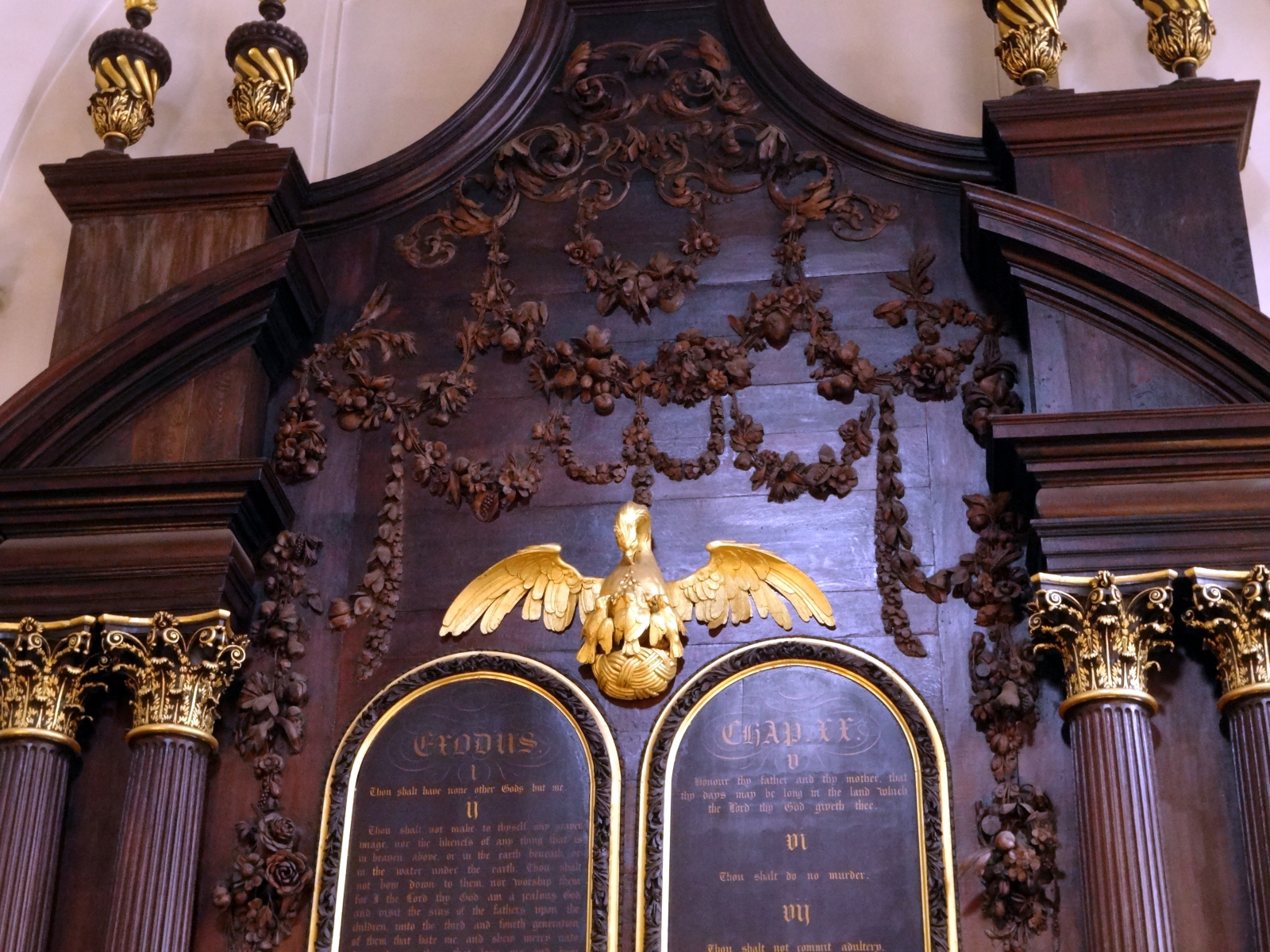
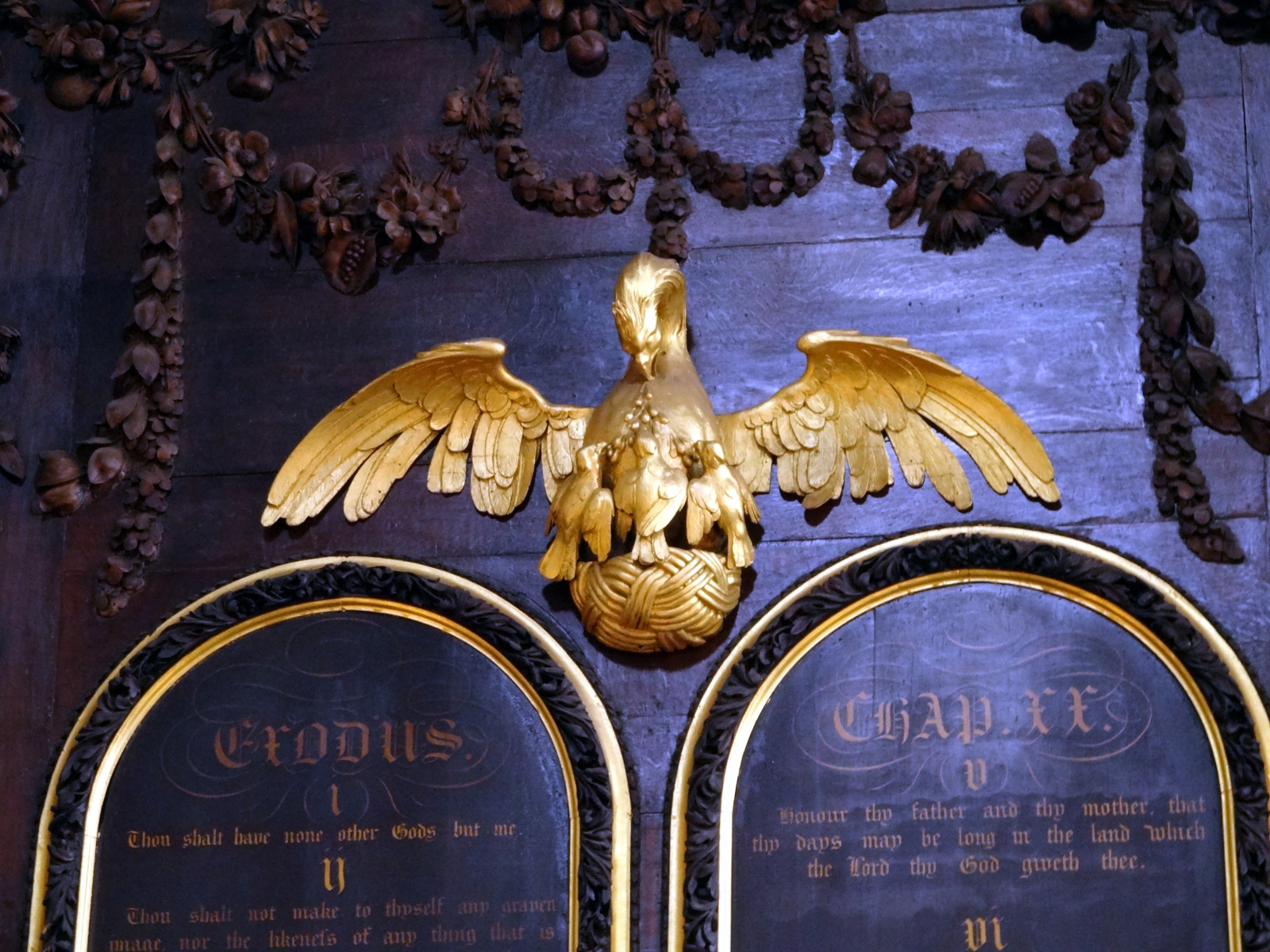
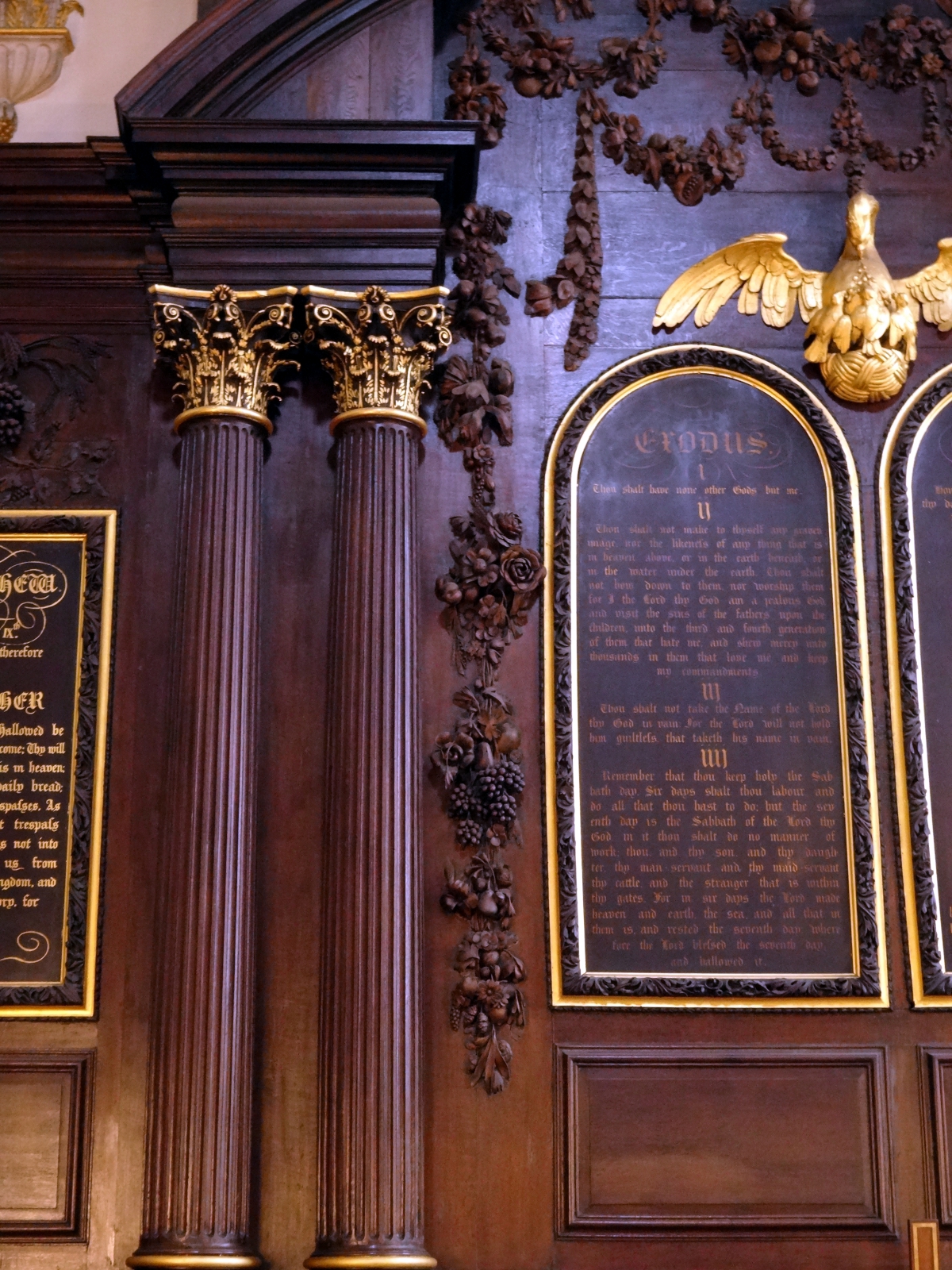
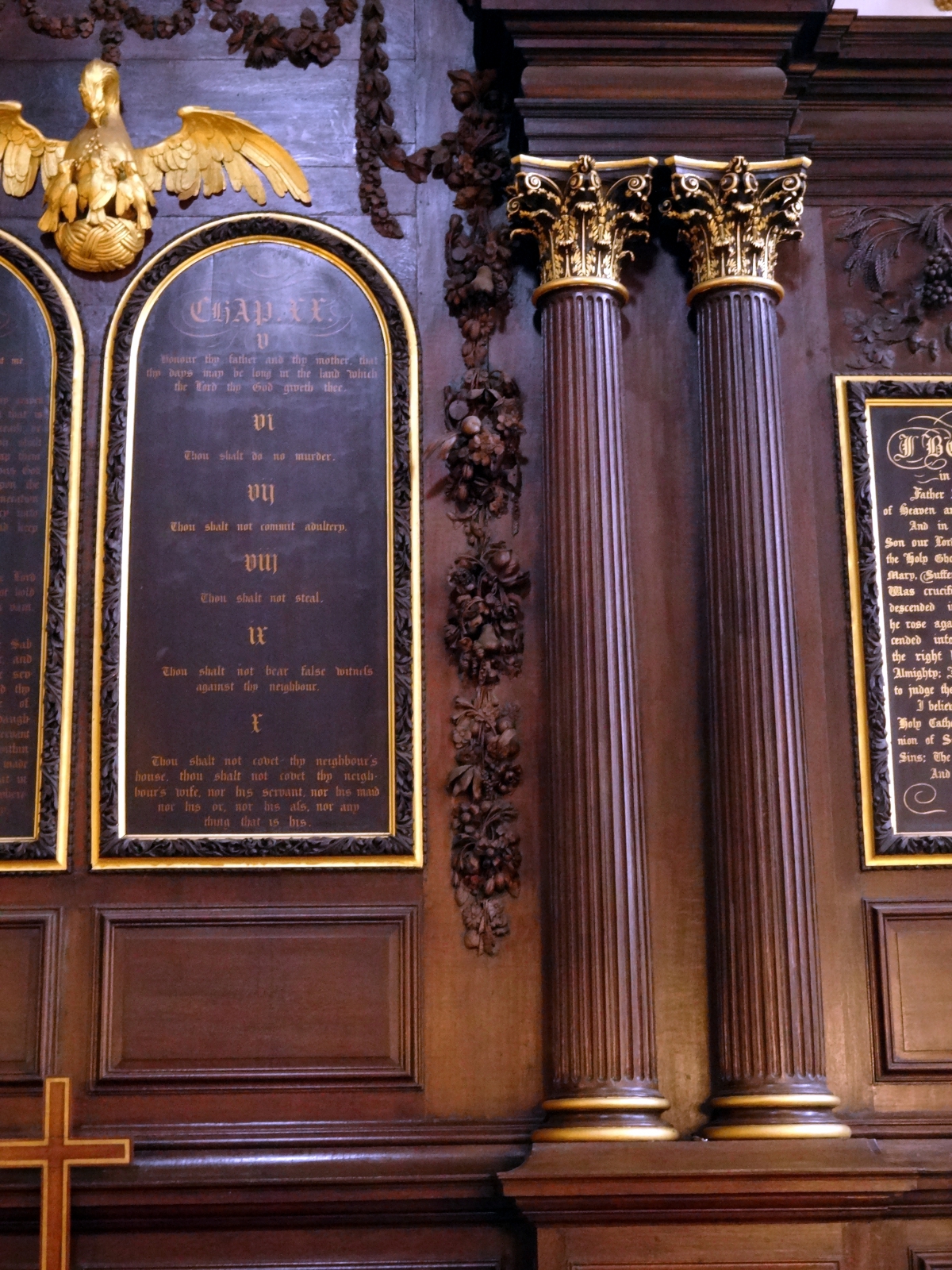
Finally, a couple of photos showing panels that flank the columns. I apologize for the “soft focus.” The combination of poor vantage points, a simple camera extended to the limits of its range, and low light, leaves us with fuzzier results than I like. Yet, we can see the theme of wheat and grapes signifying nourishment.
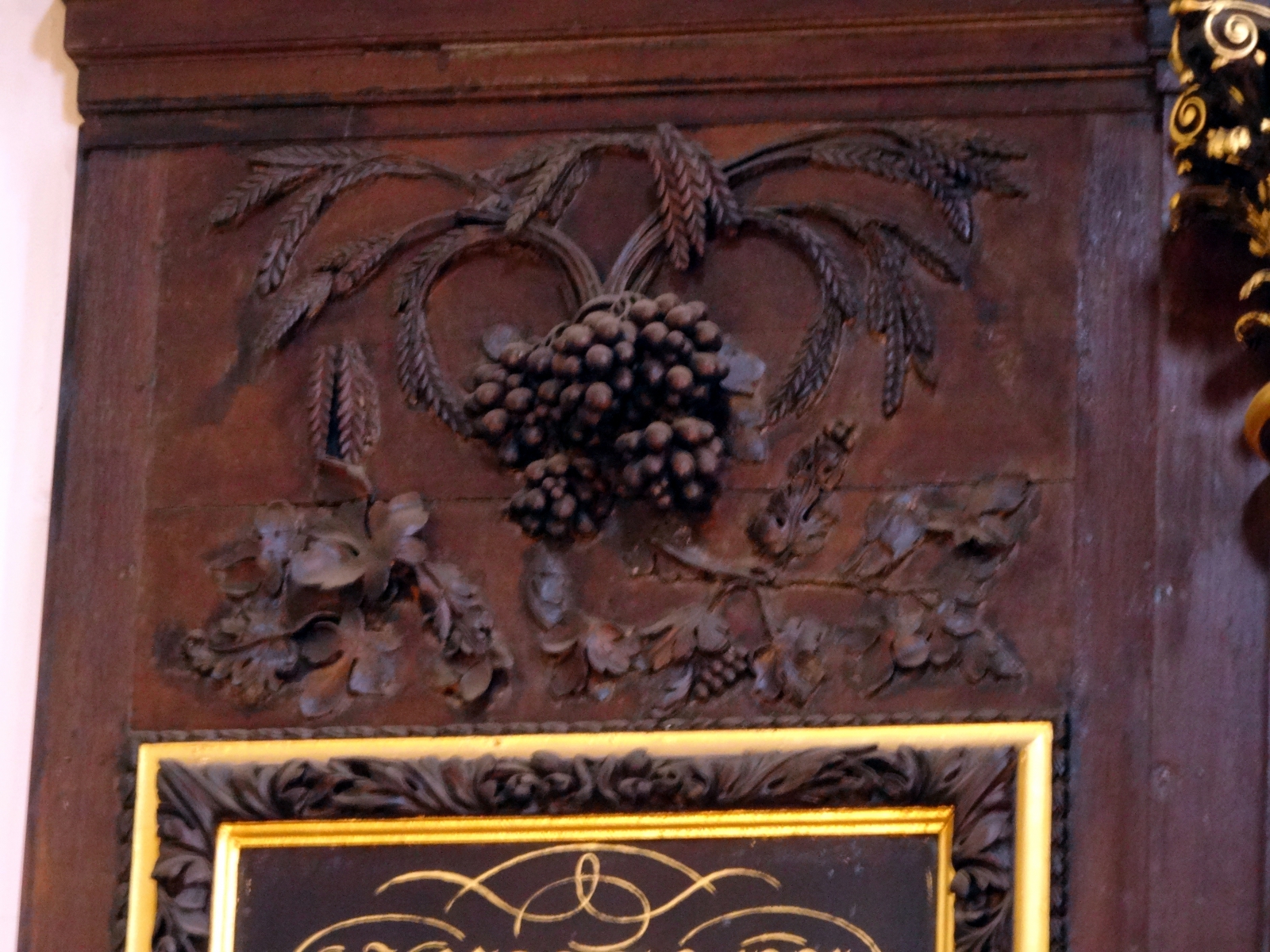
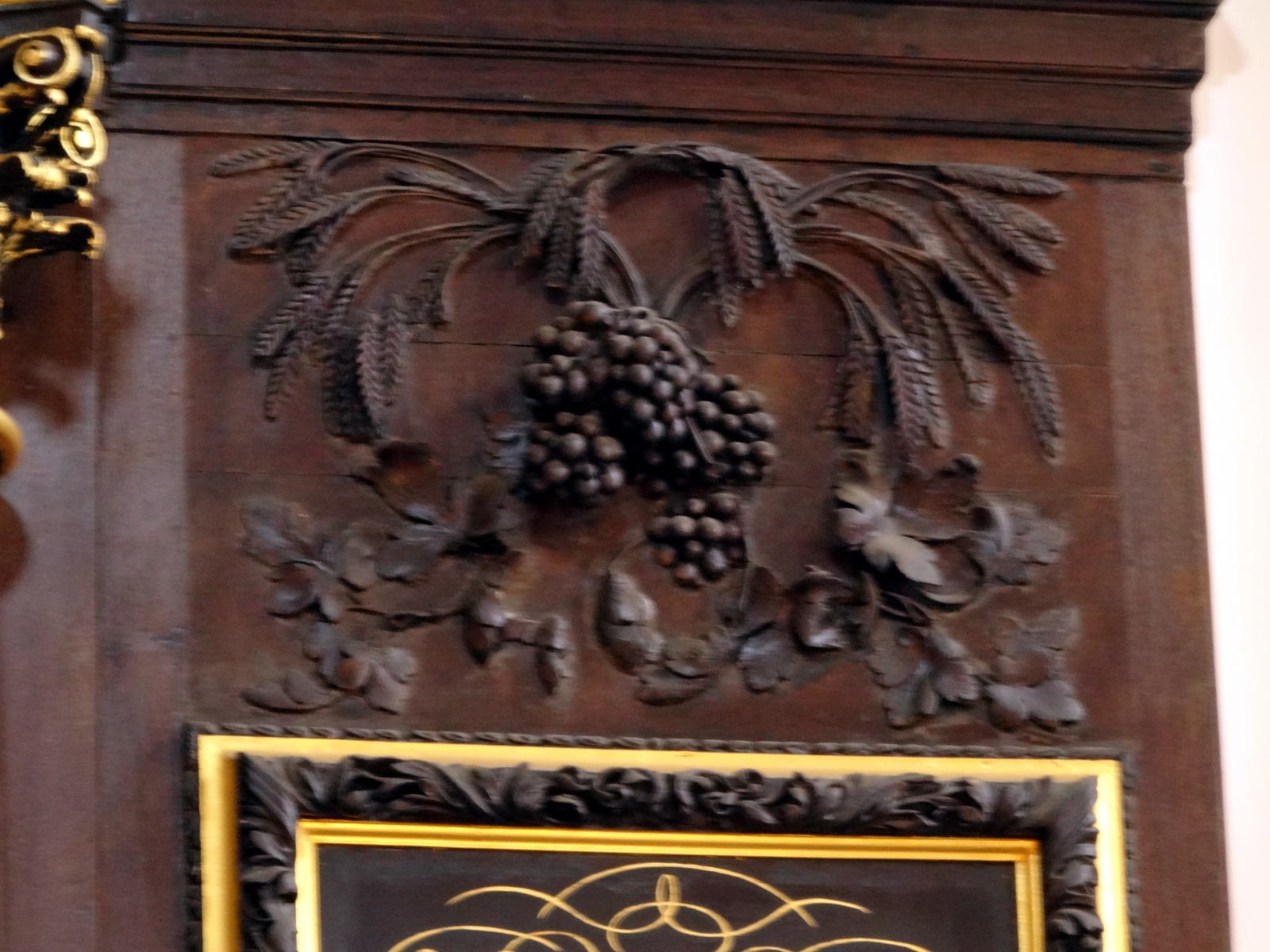
Oh, by the way…
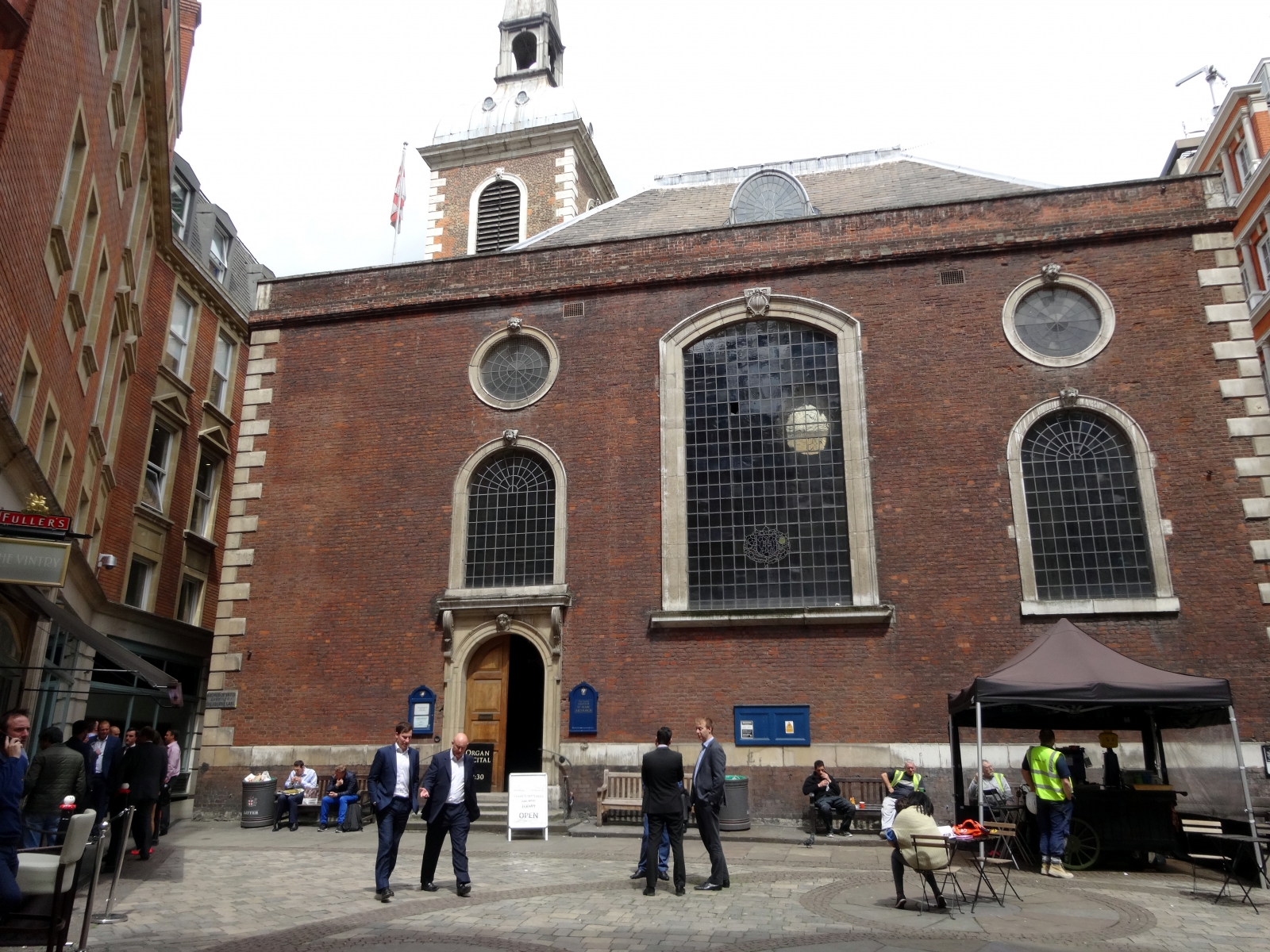
John Stow’s Survey of London (1598) describes the church as “called of Saint Marie Abchurch, Apechurch, or Upchurch.” “Abchurch” and “Apechurch” are variants of “Upchurch,” and that “Up” refers to the church being on higher ground than its surroundings. However, when you go looking for it, you won’t find it noticeably standing by itself atop a hill, nor will you even be able to see a rising spire from any nearby street. The church is now completely surrounded by the taller office buildings of the financial district. You’ll struggle to find the narrow “Abchurch Lane,” but once you do, you’ll discover the church and its yard. The yard is a welcome respite to businessmen and visitors who get their lunch at nearby cafes and vendors’ carts.
The church has existed since the 12th century, not quite as long as All Hallows by the Tower (7th century). Unlike All Hallows, St. Mary Abchurch was consumed by the Great Fire and was rebuilt by Sir Christopher Wren.
The church suffered bomb damage in 1940, and the vergeress recovered broken pieces of the reredos, which was reassembled in 1948.
When you stop by to see the Gibbons carvings, or to have lunch, enjoy the organ recital held Tuesdays at 12:30. (Or, at least they were before the COVID pandemic.)
Your comments are welcome: